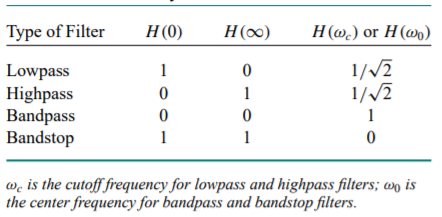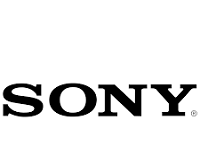The concept of filters has been an integral part of the evolution of electrical engineering from the beginning.
A filter is a circuit that is designed to pass signals with desired frequencies and reject or attenuate others.
As a frequency-selective device, a filter can be used to limit the frequency
spectrum of a signal to some specified band of frequencies.
Filters are the circuits used in radio and TV receivers to allow us to select one desired
signal out of a multitude of broadcast signals in the environment.
A filter is a passive filter if it consists of only passive elements R,
L, and C.
It is said to be an active filter if it consists of active elements
(such as transistors and op amps),
In addition to passive elements R, L, and C.
Furthermore, there are other kinds of filters—
- Digital filters,
- Electromechanical filters,
- And, microwave filters—which are beyond the level of the text.

As shown in Fig., there are four types of filters whether
passive or active:
- A lowpass filter passes low frequencies and stops high
frequencies, as shown in Fig. (a). - A highpass filter passes high frequencies and rejects low
frequencies, as shown in Fig. (b). - A bandpass filter passes frequencies within a frequency band
and blocks or attenuates frequencies outside the band, as
shown in Fig. (c). - A bandstop filter passes frequencies outside a frequency band
and blocks or attenuates frequencies within the band, as shown in Fig. (d).

Above Table presents a summary of the characteristics of these filters.
Also, one should consider that these are only valid for first- or
second-order filters.
Limits to passive filters
There are three major limits to the passive filters –
Firstly, they cannot generate gain greater than 1;
passive elements cannot add energy to the network.
Secondly, they may require bulky and expensive inductors.
Third, they perform poorly at frequencies below the audio frequency range (300 Hz)
The passive filters are useful at high frequencies.
Active filter
Active filters consist of combinations of resistors, capacitors, and
op amps. They offer some advantages over passive RLC filters.
First, they are often smaller and less expensive, because they do not require
inductors.
This makes feasible the integrated circuit realizations of filters.
Second, they can provide amplifier gain in addition to providing
the same frequency response as RLC filters.
Third, active filters can be combined with buffer amplifiers (voltage followers);
This is to isolate each stage of the filter from source and load impedance effects.
However, active filters are less reliable and less stable.
Also, visit our website for such useful notes.




